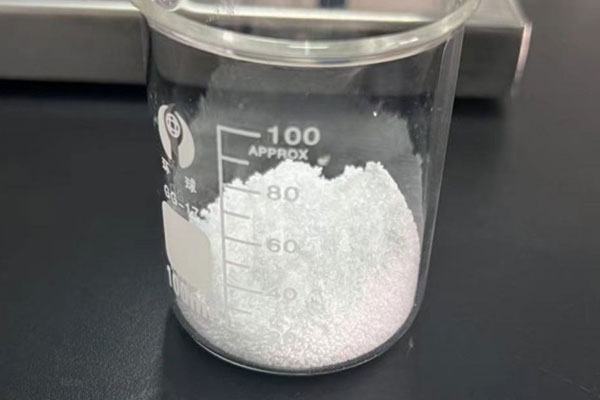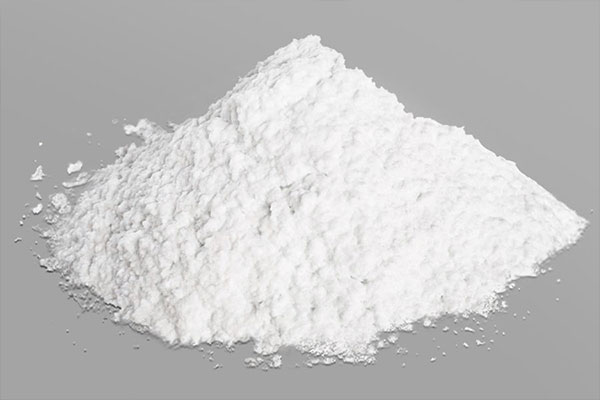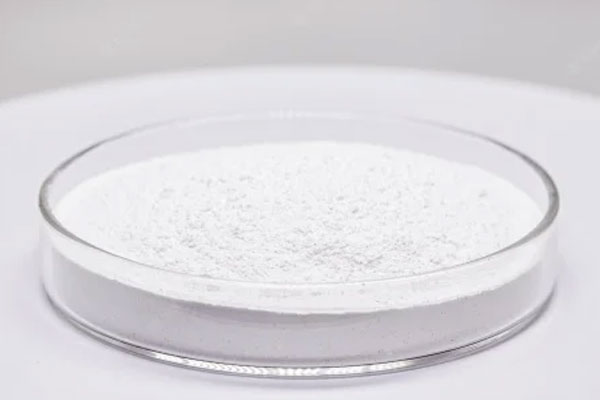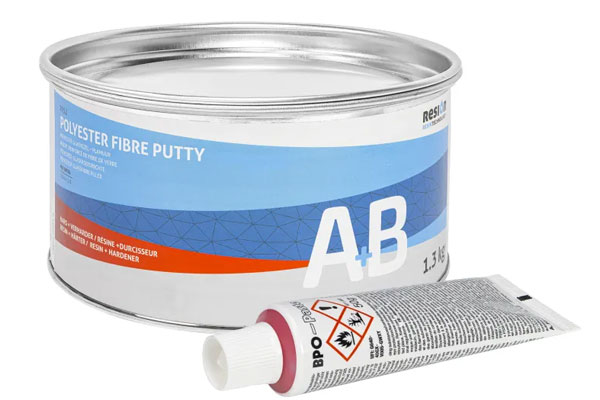Benzoyl Peroxide (BPO) Granules are a stabilized, granular form of benzoyl peroxide, widely utilized as a polymerization initiator and curing agent in various industrial applications. This form offers enhanced safety, ease of handling, and consistent performance compared to other forms like powders or pastes.
การแนะนำประสิทธิภาพของผลิตภัณฑ์
1. Chemical Identity
-
Chemical Name: Benzoyl Peroxide
-
CAS Number: 94-36-0
-
Molecular Formula: C₁₄H₁₀O₄
-
Molecular Weight: 242.23 g/mol
-
Synonyms: Dibenzoyl Peroxide, BPO, Benzoic Peroxyanhydride
2. Physical and Chemical Properties
| คุณสมบัติ | ค่า |
|---|---|
| Appearance | White granular solid |
| Odor | Faint odor of benzaldehyde |
| Melting Point | 103–106 °C |
| ความหนาแน่น | 1.16 g/cm³ at 25 °C |
| Solubility in Water | Insoluble |
| Solubility in Organic Solvents | Soluble in acetone, benzene, chloroform; slightly soluble in ethanol |
| Flash Point |
|
| Decomposition Temperature | 131 °C (1-minute half-life) |
| Theoretical Active Oxygen Content | 6.62% |
3. Technical Data Sheet (TDS)
3.1. Product Specifications
| พารามิเตอร์ | ข้อมูลจำเพาะ |
|---|---|
| Assay (BPO Content) | 72–76% |
| Water Content | 22–25% |
| Free Chloride | ≤0.1% |
| Free Acid (as Benzoic Acid) | ≤0.5% |
| Appearance | White granular solid |
| Bulk Density | 500–600 kg/m³ |
3.2. Thermal Decomposition Data
| Half-Life | Temperature |
|---|---|
| 10 hours | 73 °C |
| 1 hour | 92 °C |
| 1 minute | 131 °C |
4. Applications
4.1. Polymer Industry
-
Initiator for Polymerization: BPO granules are extensively used to initiate the polymerization of monomers such as styrene, methyl methacrylate, and acrylates in the production of plastics, resins, and adhesives.
4.2. Composite Materials
-
Curing Agent: In unsaturated polyester and vinyl ester resins, BPO granules act as a curing agent, facilitating cross-linking during the fabrication of fiberglass-reinforced plastics.
4.3. Rubber Industry
-
Vulcanizing Agent: BPO granules serve as a vulcanizing agent and cross-linking agent for silicone rubber and fluorine rubber.3bf12b2b2d28ef1b.en.made-in-china.com
5. Safety and Handling
5.1. Hazards Identification
-
Oxidizing Agent: BPO granules are strong oxidizers and can pose fire and explosion hazards, especially when dry or in contact with combustible materials.
-
Health Hazards: Exposure may cause skin and eye irritation. Inhalation of dust can irritate the respiratory tract.
5.2. Exposure Limits
-
NIOSH Recommended Exposure Limit (REL): TWA 5 mg/m³
-
OSHA Permissible Exposure Limit (PEL): TWA 5 mg/m³
-
Immediately Dangerous to Life or Health (IDLH): 1500 mg/m³
5.3. Personal Protective Equipment (PPE)
-
Eye Protection: Safety goggles or face shield
-
Skin Protection: Protective gloves and clothing
-
Respiratory Protection: Dust mask or respirator in case of inadequate ventilation
5.4. First Aid Measures
-
Inhalation: Move to fresh air. Seek medical attention if symptoms persist.
-
Skin Contact: Wash with soap and water. Remove contaminated clothing.
-
Eye Contact: Rinse cautiously with water for several minutes. Seek medical advice.
-
Ingestion: Do not induce vomiting. Seek immediate medical attention.
6. Storage and Stability
-
สภาพการเก็บรักษา: Store in a cool, dry, well-ventilated area away from heat sources and direct sunlight.
-
Temperature: Maintain storage temperature below 35 °C.
-
บรรจุภัณฑ์: Typically available in 20 kg or 25 kg containers with inner polyethylene bags and outer fiber drums or cartons.
-
Stability: BPO granules are stable under recommended storage conditions but decompose upon heating, shock, or friction.
7. Regulatory Information
-
UN Number: 3104 (for BPO with ≥52% content)
-
Hazard Class: 5.2 (Organic Peroxides)
-
Packing Group: II
-
Regulatory Listings: BPO is listed under various regulatory frameworks, including REACH, TSCA, and OSHA.
8. Environmental Impact
-
Ecotoxicity: BPO is harmful to aquatic life with long-lasting effects.
-
Degradability: It decomposes into benzoic acid and oxygen, which can contribute to environmental oxygen demand.
BPO granules
ชุด :
Fiberglass Accessories >แอปพลิเคชัน
5.1. Polymer Industry Initiator for Polymerization: BPO is widely used to initiate the polymerization of monomers like styrene, methyl methacrylate, and acrylates in the production of plastics, resins, and adhesives. 5.2. Composite Materials Curing Agent: In unsaturated polyester and vinyl ester resins, BPO acts as a curing agent, facilitating cross-linking during the fabrication of fiberglass-reinforced plastics. 5.3. Pharmaceuticals and Cosmetics Acne Treatment: BPO is a common active ingredient in topical acne medications due to its antibacterial properties. 5.4. Food Industry Bleaching Agent: BPO is employed to bleach flour, whey, and cheese products, improving their appearance.
ชื่อแบรนด์ :
ทีเอฟคอมโพสิต
ชื่อผลิตภัณฑ์ :
BPO granules
คำถามที่พบบ่อย
ถาม :
What is BPO Paste used for in the fiberglass industry?
ตอบ :
BPO (Benzoyl Peroxide) paste is primarily used as a curing initiator for unsaturated polyester and vinyl ester resins. It helps start the polymerization process in various fiberglass manufacturing methods like hand lay-up, spray-up, pultrusion, casting, and filament winding.
ถาม :
Why is BPO used in paste form rather than powder?
ตอบ :
Safer (less risk of explosion or fire) Easier to handle and mix Less dusty More stable during storage and transportation
ถาม :
Can BPO paste be used alone for curing?
ตอบ :
No. BPO paste requires a promoter/accelerator—most commonly cobalt octoate—to decompose properly and generate free radicals for curing.
ถาม :
What is the typical dosage of BPO paste in fiberglass production?
ตอบ :
The standard dosage is usually 1.0% – 2.5% by resin weight, depending on resin type, curing speed required, and temperature.
สินค้าอื่นๆที่เกี่ยวข้อง





